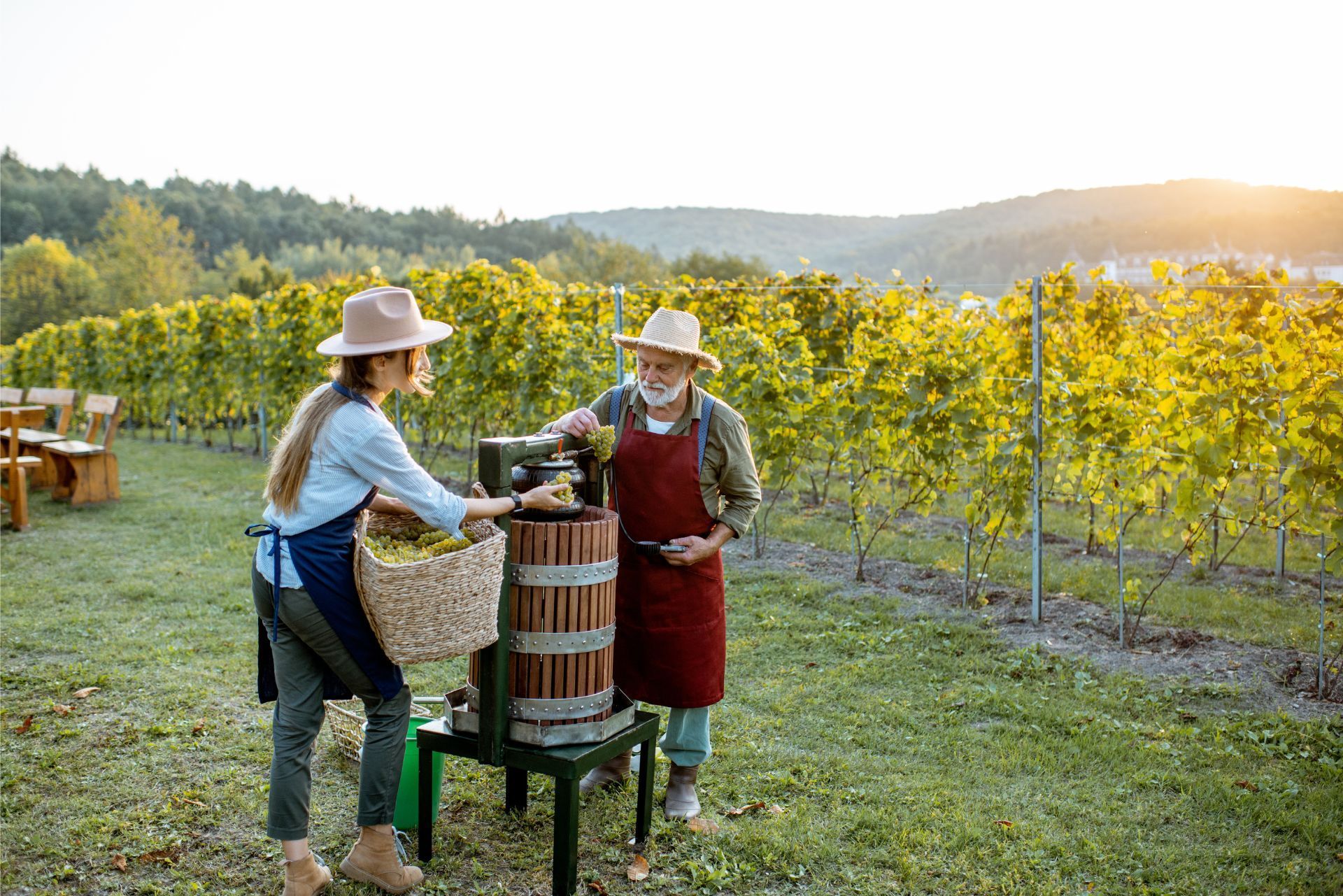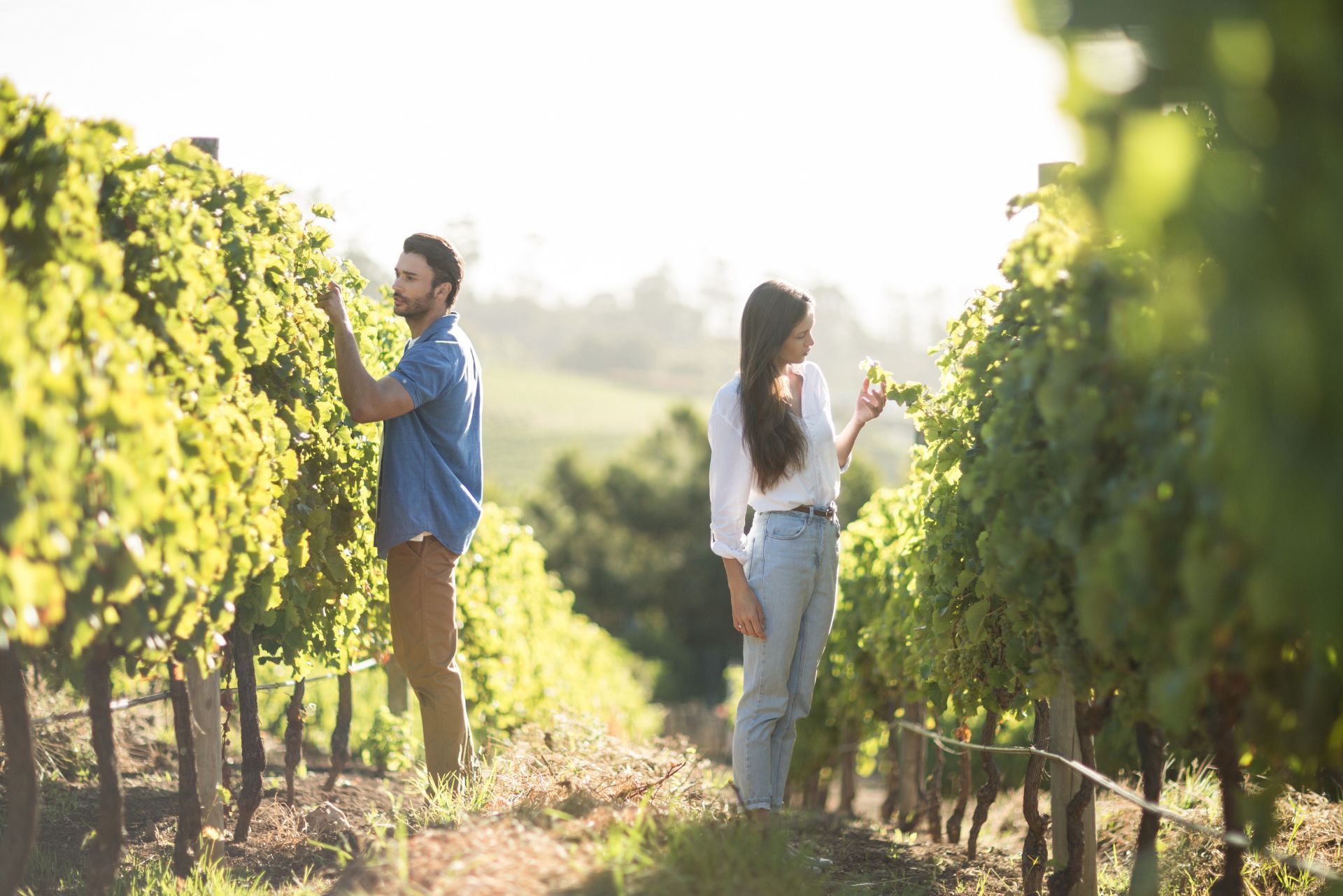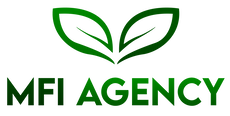
Top 3 Recommended Policies

Owning and operating a vineyard or winery is a unique and rewarding venture, blending agriculture with artistry and business acumen. However, like any agricultural enterprise, vineyards and wineries face a variety of risks—from unpredictable weather and pests to equipment breakdowns and liability issues. This is where specialized vineyard and winery farm insurance becomes essential. This ultimate guide will walk you through everything you need to know about protecting your vineyard or winery, helping you make informed decisions to safeguard your investment.
Understanding the Unique Risks of Vineyards and Wineries
Vineyards and wineries operate at the intersection of farming, manufacturing, and hospitality, which means they face a diverse range of risks. Unlike typical farms, vineyards require long-term investment in vines that take years to mature, making crop loss particularly devastating. Wineries, on the other hand, must also consider risks related to production, storage, and sales.
Some of the most common risks include:
- Weather and Natural Disasters: Frost, hail, drought, and wildfires can severely damage grapevines and affect yield quality and quantity.
- Pests and Diseases: Vineyards are vulnerable to pests like phylloxera and diseases such as powdery mildew, which can decimate crops.
- Equipment and Facility Damage: Machinery breakdown, fire, or vandalism can disrupt operations and cause significant financial loss.
- Liability Risks: Wineries often host tastings, tours, and events, exposing them to potential liability claims from visitors or customers.
- Product Liability: As producers of consumable goods, wineries must manage risks related to product contamination or recalls.
Understanding these risks is the first step in tailoring an insurance plan that fits the specific needs of your vineyard or winery. Additionally, it is essential for vineyard owners to stay informed about the latest agricultural practices and technologies that can mitigate some of these risks. For example, implementing precision agriculture techniques can help monitor soil health and optimize irrigation, reducing the impact of drought. Similarly, integrated pest management strategies can significantly lower the likelihood of pest infestations without relying solely on chemical treatments, thus protecting both the crop and the environment.
Moreover, the financial implications of these risks extend beyond immediate losses. The long-term sustainability of a vineyard or winery can be jeopardized by recurrent issues, such as poor grape quality due to pests or diseases, which can diminish brand reputation and customer loyalty. Therefore, proactive risk management not only safeguards physical assets but also enhances the overall resilience of the business in a competitive market. Investing in staff training and developing emergency response plans can further fortify a winery’s ability to navigate unforeseen challenges, ensuring that they remain a cherished destination for wine enthusiasts and a reliable source of quality products.
Types of Insurance Coverage for Vineyards and Wineries
Insurance policies for vineyards and wineries are designed to address the unique challenges of these businesses. Here’s a breakdown of the essential coverages:
Crop Insurance
Crop insurance protects against loss or damage to grapevines caused by natural disasters such as hail, frost, drought, and disease. Given that grapevines can take 3-5 years to mature and produce quality fruit, this coverage is critical for long-term financial stability.
There are two primary types of crop insurance relevant to vineyards:
- Multi-Peril Crop Insurance (MPCI): Covers losses due to a variety of perils including weather-related events and disease.
- Named Peril Insurance: Covers specific risks named in the policy, such as hail or frost.
Farmers should evaluate which policy suits their region and risk profile best. Additionally, many vineyards may benefit from consulting with an agricultural insurance specialist who can provide tailored advice based on local climate patterns and historical data, ensuring that the selected coverage aligns with the specific vulnerabilities of their grape varieties.
Property Insurance
This coverage protects the physical assets of your vineyard or winery, including buildings, machinery, storage tanks, barrels, and inventory. Given the high value of winery equipment and the perishability of wine stock, property insurance is essential to mitigate financial losses from fire, theft, vandalism, or natural disasters. Furthermore, it is important to regularly assess and update the value of these assets to ensure that coverage limits are adequate, especially as the winery expands or invests in new technology.
Equipment Breakdown Insurance
Wineries rely heavily on specialized equipment such as crushers, fermentation tanks, bottling lines, and refrigeration units. Equipment breakdown insurance covers the cost of repairing or replacing damaged machinery, minimizing downtime and loss of production. This type of insurance is particularly vital during peak production seasons when any disruption can lead to significant financial setbacks. Additionally, wineries might consider investing in routine maintenance programs to reduce the likelihood of equipment failure, which can further enhance the effectiveness of this insurance coverage.
General Liability Insurance
Because many wineries operate tasting rooms and host events, general liability insurance is vital. It protects against claims arising from bodily injury or property damage sustained by visitors or customers on your premises. This coverage can include slip-and-fall incidents, alcohol-related claims, and other liability exposures. Wineries should also consider additional endorsements, such as event liability coverage, to protect against risks associated with hosting weddings, corporate events, or festivals, which can attract larger crowds and increase the potential for incidents.
Product Liability Insurance
As producers of consumable goods, wineries face potential lawsuits related to product defects, contamination, or allergic reactions. Product liability insurance offers protection against claims resulting from the consumption of your wines or related products. Given the increasing consumer awareness around food safety and quality, wineries should implement stringent quality control measures and maintain thorough documentation of their production processes. This not only helps in mitigating risks but can also be beneficial in the event of a claim, demonstrating due diligence and adherence to safety standards.
Business Interruption Insurance
In the event of a covered loss that forces your vineyard or winery to halt operations, business interruption insurance helps cover lost income and ongoing expenses. This coverage is crucial for maintaining financial stability during recovery periods. Wineries should carefully assess their potential risks and the duration of expected interruptions to determine the appropriate level of coverage. Additionally, developing a comprehensive business continuity plan can further enhance resilience, allowing wineries to respond effectively to unforeseen events and minimize downtime.
Workers’ Compensation Insurance
If you employ workers in your vineyard or winery, workers’ compensation insurance is typically required by law. It covers medical expenses and lost wages for employees injured on the job, protecting both your staff and your business. Beyond compliance, investing in employee safety training and ergonomic work practices can significantly reduce the incidence of workplace injuries, ultimately lowering insurance premiums and fostering a safer work environment. Regular safety audits and open communication about workplace hazards can also empower employees to take an active role in maintaining a safe vineyard or winery.

Factors Influencing Vineyard & Winery Insurance Costs
Insurance premiums for vineyards and wineries can vary widely based on several factors. Understanding these can help you manage costs while ensuring adequate coverage.
Location and Climate
Regions prone to extreme weather events, wildfires, or frost may face higher premiums due to increased risk. For example, vineyards in California’s wildfire-prone areas often pay more for coverage than those in more temperate climates. Additionally, vineyards located in areas with high humidity or frequent rainfall may need to consider coverage for mold and mildew, which can further impact insurance costs. The geographical features of a location, such as proximity to bodies of water or elevation, can also influence the risk profile and subsequently the insurance premiums.
Size and Scale of Operation
Larger vineyards with extensive acreage and multiple facilities typically require more comprehensive coverage, which can increase premiums. Conversely, smaller boutique wineries may have lower costs but still need specialized policies. The scale of operations also affects the complexity of insurance needs; for instance, vineyards that host events or offer tours may need additional liability coverage to protect against potential accidents on-site. Furthermore, the workforce size and the use of seasonal labor can introduce additional liability considerations that insurers take into account when determining premiums.
Value of Assets and Inventory
The replacement value of buildings, equipment, and wine inventory directly impacts property insurance costs. High-value barrels, rare vintage wines, or advanced machinery increase the insured value and thus premiums. It's essential for vineyard owners to regularly assess and update their asset valuations, as fluctuations in market prices can affect insurance coverage needs. Moreover, unique features such as historic buildings or specialized fermentation equipment may require tailored insurance solutions to ensure that all valuable aspects of the operation are adequately protected.
Risk Management Practices
Implementing strong risk management strategies—such as frost protection systems, pest control programs, and security measures—can reduce the likelihood of claims and lower insurance costs. Additionally, maintaining proper vineyard maintenance practices, such as regular inspections and prompt repairs, can demonstrate to insurers a commitment to minimizing risks. Engaging in community risk reduction initiatives or participating in local agricultural programs can also positively influence an insurer's perception of a vineyard's risk profile, potentially leading to better rates.
Claims History
A history of frequent claims can signal higher risk to insurers, resulting in increased premiums or difficulty obtaining coverage. It's crucial for vineyard owners to understand the implications of their claims history and to work proactively to mitigate risks. For instance, investing in employee training to reduce workplace accidents or enhancing security measures to prevent theft can help improve a vineyard's claims record over time. Additionally, some insurers may offer incentives for policyholders who can demonstrate a commitment to loss prevention, which can lead to more favorable premium rates in the long run.
How to Choose the Right Vineyard & Winery Insurance Provider
Selecting the right insurance partner is as important as choosing the right coverage. Here are key considerations when evaluating providers:
Specialization in Agricultural and Winery Insurance
Look for insurers with expertise in vineyard and winery operations. Specialized knowledge ensures they understand your unique risks and can offer tailored coverage options. This specialization can also mean that they are familiar with the specific challenges faced by vineyards, such as unpredictable weather patterns, pest infestations, and the intricacies of wine production. A provider that understands these nuances can better anticipate your needs and offer proactive solutions to mitigate potential risks.
Comprehensive Coverage Options
Choose providers that offer a broad range of policies, including crop, property, liability, and product insurance, ideally bundled for convenience and cost savings. Additionally, consider options for business interruption insurance, which can protect your revenue in case of unforeseen events that halt production. Having a comprehensive plan means you can focus on your winemaking without worrying about the financial implications of potential setbacks.
Financial Stability and Reputation
Research the insurer’s financial strength ratings and customer reviews. Reliable companies with strong financial backing are better positioned to pay claims promptly. Look for third-party ratings from organizations such as A.M. Best or Standard & Poor’s, which can provide insight into the insurer’s reliability. Engaging with fellow vineyard owners or industry associations can also yield valuable recommendations and insights into which providers have a solid reputation within the community.
Claims Support and Customer Service
Responsive and knowledgeable claims support can make a significant difference during stressful times. Seek providers known for excellent customer service and efficient claims handling. In the event of a claim, having a dedicated claims adjuster who understands the intricacies of vineyard operations can expedite the process and minimize disruptions. Additionally, inquire about the availability of 24/7 support, as emergencies can arise at any time, and having access to assistance when you need it most is crucial.
Competitive Pricing and Discounts
While cost shouldn’t be the sole factor, obtaining multiple quotes and asking about discounts for risk mitigation measures can help you find affordable coverage. Many insurers offer incentives for implementing safety protocols, such as fire prevention systems or employee training programs. By investing in these measures, not only can you lower your premiums, but you also enhance the overall safety and sustainability of your vineyard operations. Furthermore, consider the long-term value of the policy; sometimes, a slightly higher premium can provide significantly better coverage and peace of mind.
Practical Tips for Managing Vineyard & Winery Risks
Insurance is a critical safety net, but proactive risk management can reduce the likelihood of claims and improve your business’s resilience.
Implement Frost and Weather Protection Systems
Investing in frost fans, heaters, or irrigation systems can protect vines during critical growth periods. Monitoring weather forecasts and using technology for early warnings also helps mitigate losses.
Pest and Disease Control
Regular vineyard monitoring, integrated pest management, and timely treatment can prevent widespread damage. Collaborate with agricultural extension services or viticulture experts for best practices.
Maintain Equipment and Facilities
Routine maintenance of machinery and buildings reduces breakdowns and fire risks. Keep storage areas clean and secure to protect wine inventory.
Train Staff on Safety and Compliance
Educate employees on safe handling of equipment, chemicals, and alcohol service. Compliance with local regulations reduces liability exposures.
Document and Inventory Assets
Maintain detailed records and photographs of your vineyard, equipment, and wine inventory. This documentation expedites claims processing if damage occurs.
Case Studies: Real-World Examples of Vineyard & Winery Insurance in Action
Examining real-life scenarios highlights the importance of comprehensive insurance coverage.
Case Study 1: Wildfire Devastation in Napa Valley
In 2020, wildfires swept through Napa Valley, destroying thousands of acres of vineyards and winery facilities. Many vineyard owners with property and crop insurance were able to recover financially, rebuild their operations, and replant vines. Those without adequate coverage faced devastating losses and prolonged recovery periods.
Case Study 2: Liability Claim at a Winery Tasting Event
A visitor at a winery tasting room slipped on a wet floor and sustained injuries. The winery’s general liability insurance covered medical expenses and legal fees, protecting the business from significant financial hardship. This incident underscores the importance of liability coverage for wineries open to the public.
Case Study 3: Equipment Breakdown During Harvest
A critical bottling machine malfunctioned during peak harvest season, threatening to delay wine production. Equipment breakdown insurance allowed the winery to quickly repair the machine and avoid costly downtime, maintaining supply commitments to distributors.

Conclusion: Securing the Future of Your Vineyard or Winery
Operating a vineyard or winery involves navigating a complex landscape of agricultural, production, and hospitality risks. Vineyard and winery farm insurance is not just a regulatory formality but a strategic investment in your business’s longevity and success.
By understanding the specific risks, selecting appropriate coverage, partnering with knowledgeable insurers, and implementing sound risk management practices, vineyard and winery owners can protect their passion and livelihood against unforeseen challenges.
As the wine industry continues to grow and evolve, staying informed and proactive about insurance will ensure your vineyard or winery remains resilient and thriving for generations to come.
Contact Us

